- Home
- Orhan Pamuk
Istanbul Page 13
Istanbul Read online
Page 13
How true were these stories, so many of which are attributed to “contemporary newspapers”? We are told, for example, that in the fifteenth century, Kara Mehmet Pasha lost his head trying to put down a rebellion, and perhaps it is true that the sight of his severed head persuaded his men to end the rebellion, and perhaps, like many who find themselves in such situations, they expressed their anger at the vizier by throwing his head around. But did the men really do as they did in the illustration and play soccer with the pasha’s head? I never dwelt long on such questions, preferring to move on to Ester Kira, the sixteenth-century “tax collector” who was said also to be Safiye Sultan’s bribe collector; killed during another rebellion, she was cut into pieces and a bit of her was nailed to the doors of each of those who had bribed her. I examined the drawing of a hand nailed to a door with some trepidation.
Koçu—one of the four melancholic writers I described earlier—gave his greatest attention to the strange and terrifying details of another subject that also thrilled the travelers from the West: the methods of Istanbul’s torturers and executioners. One place in Eminönü was especially constructed for what was known as the Hook. Wearing nothing but the suit in which he emerged from his mother’s womb, the condemned was winched up with pulleys, skewered with the sharp hook, and, as the cord was released, left to drop.
There was also a Janissary, who, having fallen in love with an imam’s wife, kidnapped her, chopped off all her hair, and took her around the city dressed as a boy; when he was caught they broke his arms and legs, stuffed him into the barrel of a cannon stoked with oily rags and gunpowder, and blew him into the sky.
A FORM OF EXECUTION GUARANTEED TO CAUSE TERROR! is how the encyclopedia heading described another gruesome punishment. It involved tying the condemned, naked and facedown, to a cross and, by the light of the candles that had been bored into his shoulders and buttocks, parading him around the city as a lesson to all. My reaction to the naked criminal was not without a sexual frisson, and there was some pleasure in thinking of the history of Istanbul as a gallery of death, torture, and horror, illustrated in shadowy black and white.
In the beginning, Reşat Ekrem Koçu wasn’t planning to write a book. It was only in 1954 that the four-page Cumhuriyet supplements containing “Strange and Curious Facts from Our History” were bound together in a collection. Behind these strange stories, oddities, and historical and encyclopedic minutiae was Koçu’s own strange and tragic story. His labor of love—which he’d begun ten years earlier, in 1944, and which poverty had forced him to abandon in 1951 on page 1000, in volume 4, while still on the letter B—was the Istanbul Encyclopedia.
Seven years later, Koçu began work on a second Istanbul Encyclopedia, which he rightly and proudly claimed to be “the world’s first encyclopedia about a single city,” starting again with the letter A. Being now fifty-two years old, he was afraid of leaving his monumental labor unfinished yet again, so he resolved to scale it down to a mere fifteen volumes and also to make the entries more “popular.”
Also, now more self-confident, he saw no reason why he shouldn’t explore his personal interests in his encyclopedia. He brought out the first volume in 1958; by 1973 he was on the eleventh—but still only on the letter G—when he was forced, as he had feared, to abandon the effort. Nevertheless, this second Encyclopedia’s strange and colorful entries about twentieth-century Istanbul are an unrivaled guide to the city’s soul, for the texture of the prose is the texture of the city itself. To understand why this is so, one must have a sense of Reşat Ekrem Koçu himself.
Koçu was one of those hüzün-drenched souls who helped create an image of a twentieth-century Istanbul as a half-finished city afflicted with melancholy. Hüzün defines his life, gives his work its hidden logic, and sets him on the lonely course that can only be his final defeat, but—as with other writers working in a similar vein—he did see it as central and certainly did not give it much thought. Indeed, Reşat Ekrem Koçu, far from seeing his melancholy as proceeding from his history, his family, or his city, regarded his hüzün as innate. As for the attendant withdrawal from life and the conviction that life entailed accepting defeat from the start—he did not think of these as Istanbul’s legacy. On the contrary, Istanbul was his consolation.
Reşat Ekrem Koçu was born in 1905 to a family of teachers and civil servants. His mother was the daughter of a pasha; his father had long worked as a journalist. All through his childhood, Koçu witnessed the wars, defeats, and waves of immigration that ended the Ottoman Empire and condemned Istanbul to a poverty from which it would not emerge for decades. He would return to these subjects often in his later books and articles, just as he would return to the city’s last great fires, the firemen, the street fights, the neighborhood life, and the meyhanes he saw in his youth. He mentions a Bosphorus yali in which he lived as a child and which later burned down. When Reşat Ekrem was twenty years old, his father rented an old Ottoman villa in Göztepe. Here Koçu the younger lived the traditional life of the Istanbul wooden köşk, remaining long enough to see his extended family dispersed. As with so many families of this sort, gradual impoverishment and family feuds forced Koçu’s family to sell the wooden köşk, after which Koçu remained in Göztepe, though separated from his family and living in various concrete apartments. Perhaps no choice more clearly manifests Koçu’s melancholy backward-looking soul than his decision—at a time when the empire had fallen, the ideology of the Turkish Republic was ascendant, and westward-looking Istanbul had begun to reject, suppress, deride, and suspect anything to do with its Ottoman past—to study history in Istanbul and, after graduating, to become an assistant to his beloved teacher, the historian Ahmet Refik.
Born in 1880 and twenty-five years Koçu’s senior, Ahmet Refik was the author of a series entitled Ottoman Life in Past Centuries; it was published (as Koçu’s encyclopedia would be) fascicle by fascicle, slowly gaining in popularity and finally making him Istanbul’s first modern popular historian. When he was not teaching at the university, he was combing through the dust and dirt of the disordered Ottoman archives (then known as the “paper treasury”) for handwritten accounts of Ottoman chroniclers; he scavenged whatever he could, and because—like Koçu—he had a knack for lively prose (he loved lyrics and wrote poetry in his spare time), his newspaper articles were widely read and later collected into books. To combine history with literature, to take the strange riches from the archives and turn them into newspaper and magazine articles, to be forever roaming from bookshop to bookshop, to make history something that could be ingested with ease, and to spend long evenings with friends in meyhanes, drinking and conversing—these were some of the passions Koçu inherited from his mentor. Sadly, their association was short-lived, for Ahmet Refik was removed from his university post in 1933 during the Istanbul University (Darülfünun) reforms. His sympathies had been known to lie with the Freedom and Entente Party, which had opposed Atatürk, but it was more his passionate interest in Ottoman history and culture that cost him his eminent post (my maternal grandfather was likewise dismissed from the law faculty during the same period). When his mentor lost his job, so too did Reşat Ekrem Koçu.
Koçu was distressed to witness his mentor’s decline after his fall from favor with Atatürk and the state. Penniless, anonymous, and ignored, he had to sell off his library bit by bit to pay for medicines, and after struggling for five years he died in poverty. At the time, most of the ninety books he had written during his lifetime were out of print. (The same would be true for Koçu forty years later.)
After Ahmet Refik’s death, in an article mourning the fact that his mentor had seen himself forgotten in his own lifetime, Koçu gave himself over to a childish lyricism: “In my idle childhood years, I was like the lead on a fisherman’s hook, slipping in and out of the water from the pier opposite our Bosphorus yali like a scaly fish.”
He recalled first reading Ahmet Refik as a happy eleven-year-old, before the city made him as melancholy as Ottoman history.
But it was not just the libertine poverty-stricken city that fed Reşat Ekrem Koçu’s gloom; it was his own struggle to survive in the city as a homosexual in the first half of the twentieth century.
So it is all the more remarkable to see him expressing his sexual desires in his racy, violent popular novels and, even more daringly, in his Istanbul Encyclopedia. Indeed, Reşat Ekrem Koçu was far more courageous in this regard than any contemporary. From his first encyclopedic fascicles, and more emphatically with every new volume, he never missed an opportunity to praise the beauty of boys and young men. Here is Mirialem Ahmed Ağa, one of the boys taken in for education by Süleyman the Magnificent (“a fresh-faced youth, a human dragon with arms as thick as the branches of a plane tree”) and Cafer the Barber, mentioned by the sixteenth-century poet Evliya Çelebi, who praised the beauty of tradesmen in “şehringiz” (“a young blood famous for his beauty”). There is an entry on “Yetim Ahmed, the handsome junk dealer”: “He was a barefoot boy whose baggy trousers had been patched in forty places and whose skin could be seen through the rips in his shirt, but to judge him by his appearance, he was a sip of water, the beauty stood on his brow and his forehead like a sultan’s privilege, his hair was a riot of curls, his dark skin glinted with gold overtones, his gaze coy, his tongue flirtatious, his build tall, slender, and strong.” Despite Koçu’s breathless prose, he, like the Divan poets, took care that his loyal illustrators drew each of these imaginary barefoot heroes within the conventions of polite society and the law. But the tension between convention and reality is there all the same. In an entry titled “Janissary recruit,” he boasts of how, when beardless youths first joined up, “swaggering Janissary toughs” would take them under their wing. In an entry called “handsome young blade,” he observes that “the beauty of which Divan Poetry most often sings is male beauty.” The object of adoration was “always a young fresh-faced youth”—and he lovingly recounts the etymology of this term. In the early volumes, beautiful youths are carefully insinuated among the historic, cultural, and social facts they illustrate, but in later volumes Koçu needs no pretext for praising beautiful boys—for their beautiful legs—or commenting on their disfigurement. Under “Sailor Dobrilovitch” we read of a “remarkably handsome” young Croat, a sailor with the Hayriye Company, whose legs on December 18, 1864, as his ship was approaching Kabataş, got caught between the ship and the pier (a deep fear shared by everyone in the city). His leg, along with the boot he was wearing, dropped into the sea; all the Croat said was, “I’ve lost my boot.”
In the first volumes, his beautiful youths, young boys, and handsome barefoot men from the Ottoman past were, if not wholly real, at least partly inspired by the “city books” (şehringiz), popular legends, and the treasures he found in the city’s forgotten libraries; these included manuscripts, collected poems, books of fortune, “secret” books, and, especially rich in possibility, the nineteenth-century newspaper archives (indeed, it was in one of these he discovered the handsome young Croat sailor).
As Koçu grew older and came to realize with sadness and fury that he would be unable to limit his encyclopedia to fifteen volumes and that it was doomed to remain unfinished, he no longer felt obliged to confine himself to the beautiful boys of recorded history. He began to find excuses to insinuate entries on the many and varied youths he had, under various pretexts, met in the streets, meyhanes, coffeehouses, gazinos (open-air cafés), and bridges of the city, not to mention the newspaper boys, in each of whom he had a special interest, and even the spruce beauties who sold rosettes for the Turkish Flying Fund. So for example, in the encyclopedia’s tenth year, in the ninth volume, published when Koçu was sixty-three years old, he includes on page 4767 an entry on “a skilled child acrobat between the ages of 14 and 15 encountered between 1955 and 1956.” Koçu recalls seeing him one evening at And, a summer cinema in Göztepe, the neighborhood where he spent most of his life: “Wearing white shoes, white trousers, a flannel undershirt with a star and crescent on its front, and when displaying his skills, stripped down to tiny white shorts, with his clean and darling face, his gentlemanly air, manner, and politeness, he showed himself at once to be on an equal footing with his western peers.” The author goes on to describe how, when the program was over, though he was saddened to see the boy doing the rounds with a collection tray, he was happy to see that the child was not too grasping or ingratiating. Koçu goes on to recount that the boy acrobat gave some in the audience his card, and that the fifty-year-old author and this boy later became acquainted. Despite the author’s having written many letters to the child and his family, relations between the two were broken off sometime during the twelve years between their first meeting at the cinema and the writing of the encyclopedia entry; he goes on to lament never having received answers to his letters and is unable to say what became of the child.
During the 1960s, when Koçu’s work was still coming out fascicle by fascicle, his patient readers did not regard the Istanbul Encyclopedia as a single factual reference to the city but read it more as a magazine that mixed the strange and exotic with everyday life in the city. I remember visiting houses where people kept the fascicles with their weekly magazines. Still, Koçu was hardly a household name. The city of his melancholy encyclopedia was at odds with the mores of 1960s Istanbul, and there weren’t many readers who could tolerate, let alone appreciate, his sexual tastes. But fifty years on, his first Istanbul Encyclopedia and the first volumes of his second have a loyal following, particularly among writers and academics who, eager to understand Istanbul’s rapid westernization and the burning, demolition, and erasure of its past, have pronounced the earlier volumes “serious” and “scientific.” For my part, it is when I leaf through the later volumes, produced by a much reduced team of writers and giving ample space to Koçu’s personal obsessions, that my mind takes flight, flitting happily between the present and the past.
I’m left feeling that Koçu’s sadness is less the result of the fall of the Ottoman Empire and the decline of Istanbul than of his own shadowy childhood in those yalis and köşks. We might see our encyclopedist as a typical collector who, after a personal trauma, withdrew from the world to live among objects. But Koçu lacked the materialism of a classic collector; his interest was not in objects but strange facts. Just as so many western collectors have no idea whether their collections will end up in a museum or dispersed, he had no grand plan when the compulsion first overtook him; he began collecting out of an attraction to any fact that told him something new about the city.
It was only after he realized that his collection might have no bounds that he hit on the idea of an encyclopedia, and from then on he remained aware of the “thingness” of his collection. When Professor Semavi Eyice, the historian of Byzantine and Ottoman art who’d known Koçu since 1944 and had written entries for the encyclopedia since its inception, wrote about Koçu after his death, he described his large library piled high with “material” he kept in envelopes—newspaper clippings, collections of pictures and photographs, dossiers, and notes (now lost) compiled from his long years of reading the nineteenth-century newspapers.
When Koçu realized he would not live to finish the encyclopedia, he told Semavi Eyice that he was going to take his entire collection, a lifetime of scavenging, and burn it in his garden. Only a true collector would consider such a gesture, which calls to mind the novelist Bruce Chatwin, who for part of his life worked at Sotheby’s and whose hero, Utz, destroys his own porcelain collection in a moment of rage. Koçu did not, in the end, let anger get the better of him, but if he had, it would have made little difference; production of the Istanbul Encyclopedia steadily slowed and stopped altogether in 1973. Two years earlier, his rich partner had criticized him for cluttering the work with long and unnecessary passages following his own predilections; Koçu had quarreled with him and then removed his entire collection—typescripts, newspaper clippings, and photographs—from his Babıali office to his apartment in Göztepe. Unable to synthesiz
e the sad story of the past into a text or to enshrine it in a museum, Koçu spent his last years in an apartment piled high with mountains of paper. After his sister died, the wooden köşk his father had built was sold, but Koçu did not leave his old neighborhood. Koçu met Mehmet, the companion of his final years, just as he had met so many of the children he described in his encyclopedia; Mehmet was a homeless boy whom he took under his wing and brought up like a son; in later life, Mehmet founded a publishing house.

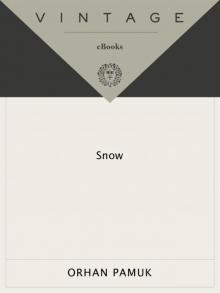 Snow
Snow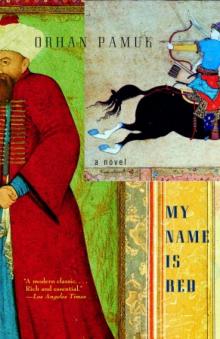 My Name is Red
My Name is Red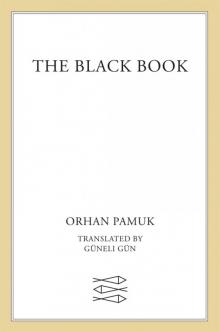 The Black Book
The Black Book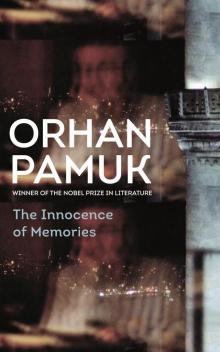 The Innocence of Memories
The Innocence of Memories The White Castle
The White Castle Other Colors
Other Colors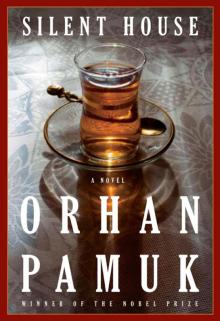 Silent House
Silent House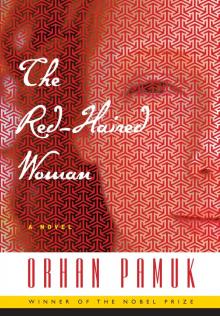 The Red-Haired Woman
The Red-Haired Woman The Museum of Innocence
The Museum of Innocence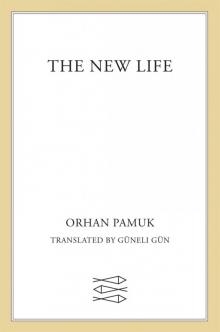 The New Life
The New Life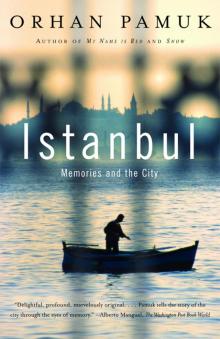 Istanbul
Istanbul